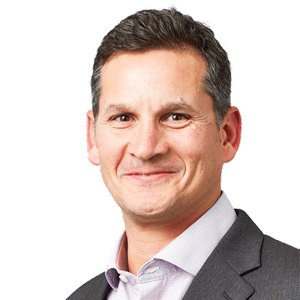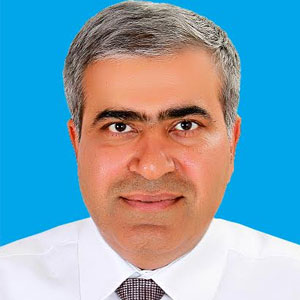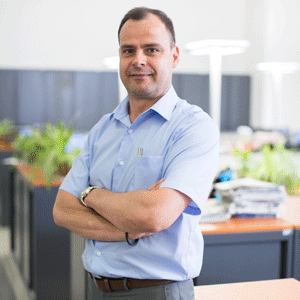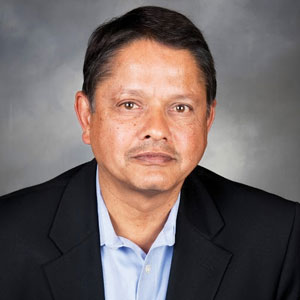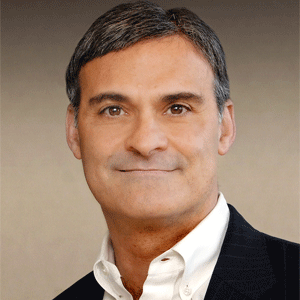THANK YOU FOR SUBSCRIBING

Innovative Smart Precincts are a Key Driver of Smart Cities
Gordon Falconer, Global Director, Smart Cities, Schneider Electric


Gordon Falconer, Global Director, Smart Cities, Schneider Electric
Smart cities continue to be at the forefront of global discussion—from high tech parts of the private sector to cities themselves and governments. Although somewhat of a nebulous concept, smart cities are generally defined as simply utilizing technology to do more with less.The technology, of course, touches on smart infrastructure and IoT. Research analysts such as Navigant and others have estimated massive investment in smart cities over the next 10 years.
Generally smart cities can be divided into new city scale developments as well as existing cities. Typically, existing cities focus on incremental change within city domains such as energy, water, and buildings. This is a very different approach compared to the new ‘blank canvas’, where a country or a city tries to develop a brand new ‘greenfield’ type city. Of course, building a new “city-sized” development is quite rare as is changing entire existing cities due to sheer size and complexity. Thus, within existing cities, we tend to see one smart city strategy adopted using a specific smaller scale precinct development as a catalyst for change. These are called precincts or district developments.
These district scale developments are of course not city scale, but they are large enough that they can encompass multiple smart city domains, thus they become a visible and useful reference point to encourage future decision making. Generally, these ‘smart precincts’ may be government planned and led but they are often executed by the private sector and almost always have a forward-looking technology focus; hence the smart precinct or smart city label. As these precincts are often of a large enough size, they are often known as a technology park or cluster. They may also be the physical part of a government or city’s technology cluster strategy.
Technology clusters and parks abound across the world with the most famous being Silicon Valley (USA). There are now examples of many different types of clusters based on different industry types such as energy, clean-tech, biotech, aerospace, etc. It is the consensus globally to build upon a city’s existing resources and infrastructures to attract business, and there are common factors associated with all clusters which make them succeed. Cities around the world aretrying to replicate these factors, and in many case, these effectively become a city’s economic advantage for that industry.
Smart Cities are now being driven to a large extent around the globe in the form of smart precincts in order to attract new businesses
These smart city precincts are driven by government or private developers of infrastructure assets who design and implement the key components the precinct need to embrace the future of technology, big data, and IoT. Smart buildings, smart water, smart energy, smart environment and smart integration are all present in these developments.
In order to develop a smart city precinct, there are a number of features generally implemented:
• The development has cutting edge operating technology with IoT driving building and infrastructure design
• Companies within the precinct are aligned around the cluster or precinct theme e.g. energy
• The precinct is doing R&D pilots and projects in a “Living Lab” approach
Much like a shopping mall, cities and governments are always chasing MNC’s to setup in their cities as “anchors” in the hope that they will attract partners and their eco-system, which will further grow the city’s cluster and economic development, and these types of smart city precincts are a key driver.In Berlin, the EUREF campus is a perfect example of the above features inherent in a smart city precinct and is part of the Berlin Senate’s Smart City Strategy. The campus is a 5.5-hectare urban development for companies working in the fields of energy, sustainability, and mobility and has 100 companies and research institutions including Schneider Electric, Wilo, GE, and DeutcheBahn. With around 18 buildings and 165,000 square meter of floor space, the campus is unique as it is already achieving the German federal government climate targets for 2050.
When you visit the campus, you are immediately struck by the presence of numerous EV charging stations and electric vehicles which then leads you to realize that EUREF is one of those rare developments which actually has a micro-grid in operation complete with machine learning algorithms and AI. In this case, the micro-grid was mainly developed and installed by Schneider Electric, ensuring that energy demand and supply is efficiently and evenly distributed. It is also a truly “living lab” in action with multiple start-up companies working on innovative energy projects within the campus itself; the term “living lab” is all too often thrown around without any real justification, but this is not the case in EUREF.
The campus, is an attractive blend of old and new with restaurants and greenery, and attracts thousands of visitors weekly from across the world who are keen to see a truly smart precinct in operation which can only serve as a beacon for the development of more smart districts in the future; and ultimately help drive smarter cities.
In conclusion, smart cities are now being driven to a large extent around the globe in the form of smart precincts in order to attract new businesses, and they are often done in alignment with the mayor or city leadership’s development goals around particular industries like energy, high tech, or even environmental goals. Technology partners such as Schneider Electric and others are key contributors to these smart precincts and will continue to be at the forefront of smart city innovation.
Weekly Brief
I agree We use cookies on this website to enhance your user experience. By clicking any link on this page you are giving your consent for us to set cookies. More info
Read Also



